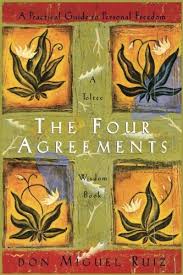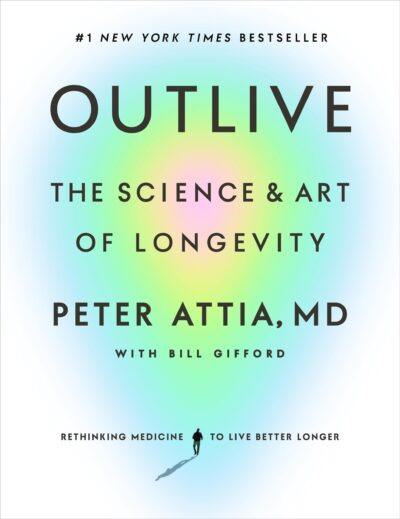68 Results with the "Self-help" genre
Adventure Fiction (1164)
Biography (435)
Business & Finance (1)
Children's Literature (124)
Comics (6)
Culture (51)
Drama (123)
Dystopian (29)
Fable (86)
Fantasy (1132)
Fantasy (203)
Fiction (1010)
Finance (1)
Gothic Fiction (12)
Historical Fiction (615)
History (122)
Horror (56)
Lifestyle (36)
Literary (404)
Literary Fiction (207)
Memoir (113)
Mystery (422)
Non-fiction (87)
Novel (549)
Paranormal Fiction (96)
Philosophical (182)
Philosophy (45)
Poetry (249)
Political Fiction (14)
Politics (42)
Practical (32)
Psychological (4)
Psychological Thriller (108)
Relationship (6)
Romance Novel (716)
Romantic Melodrama (14)
Satire (91)
Science (46)
Science Fiction (345)
Society (65)
Society (2)
Spiritual Growth (1)
story (2)
Thriller (704)
True Crime (56)
view (11)
Women's Fiction (2)
Young Adult (233)
-
Chapter
Be Impeccable with Your Word
 Chapter 2: THE FIRST AGREEMENT Be Impeccable with Your Word THE FIRST AGREEMENT IS THE MOST IMPORTANT ONE and also the most difficult one to honor. It is so important that with just this first agreement you will be able to transcend to the level of existence I call heaven on earth.The first agreement is to be impeccable with your word. It sounds very simple, but it is very, very powerful.Why your word? Your word is the power that you have to create. Your word is the gift that comes directly from God. The…
Chapter 2: THE FIRST AGREEMENT Be Impeccable with Your Word THE FIRST AGREEMENT IS THE MOST IMPORTANT ONE and also the most difficult one to honor. It is so important that with just this first agreement you will be able to transcend to the level of existence I call heaven on earth.The first agreement is to be impeccable with your word. It sounds very simple, but it is very, very powerful.Why your word? Your word is the power that you have to create. Your word is the gift that comes directly from God. The…-
90.9 K • Ongoing
-
-
Chapter
Don’t Take Anything Personally
 Don’t Take Anything Personally is the second agreement in The Four Agreements, and it centers on the critical need to detach emotionally from the opinions and actions of others. This principle teaches us that everything people say or do, especially when directed at us, is more about their own internal world—shaped by their beliefs, experiences, and feelings—than it is about us. Ruiz emphasizes that when someone criticizes or reacts negatively, it is often a projection of their own reality and not an…
Don’t Take Anything Personally is the second agreement in The Four Agreements, and it centers on the critical need to detach emotionally from the opinions and actions of others. This principle teaches us that everything people say or do, especially when directed at us, is more about their own internal world—shaped by their beliefs, experiences, and feelings—than it is about us. Ruiz emphasizes that when someone criticizes or reacts negatively, it is often a projection of their own reality and not an…-
90.9 K • Ongoing
-
-
Chapter
Don’t Make Assumptions
 Chapter 4: Don’t Make Assumptions, the third agreement in The Four Agreements by don Miguel Ruiz, a principle that addresses the profound impact assumptions can have on our lives. Ruiz explains that making assumptions often leads to misunderstandings, unnecessary conflict, and emotional distress. Many of the problems we face in relationships and life stem from the habit of assuming we know what others are thinking or what they mean by their actions, often without confirming or asking for clarification.…
Chapter 4: Don’t Make Assumptions, the third agreement in The Four Agreements by don Miguel Ruiz, a principle that addresses the profound impact assumptions can have on our lives. Ruiz explains that making assumptions often leads to misunderstandings, unnecessary conflict, and emotional distress. Many of the problems we face in relationships and life stem from the habit of assuming we know what others are thinking or what they mean by their actions, often without confirming or asking for clarification.…-
90.9 K • Ongoing
-
-
Chapter
Always Do Your Best
 THE FOURTH AGREEMENT Always Do Your Best THERE IS JUST ONE MORE AGREEMENT, BUT IT’S the one that allows the other three to become deeply ingrained habits. The fourth agreement is about the action of the first three: Always do your best. Under any circumstance, always do your best, no more and no less. But keep in mind that your best is never going to be the same from one moment to the next. Everything is alive and changing all the time, so your best will sometimes be high quality, and other times it…
THE FOURTH AGREEMENT Always Do Your Best THERE IS JUST ONE MORE AGREEMENT, BUT IT’S the one that allows the other three to become deeply ingrained habits. The fourth agreement is about the action of the first three: Always do your best. Under any circumstance, always do your best, no more and no less. But keep in mind that your best is never going to be the same from one moment to the next. Everything is alive and changing all the time, so your best will sometimes be high quality, and other times it…-
90.9 K • Ongoing
-
-
Chapter
Breaking Old Agreements
 Breaking Old Agreements EVERYONE TALKS ABOUT FREEDOM. ALL AROUND the world different people, different races, different countries are fighting for freedom. But what is freedom? In America we speak of living in a free country. But are we really free? Are we free to be who we really are? The answer is no, we are not free. True freedom has to do with the human spirit — it is the freedom to be who we really are. Who stops us from being free? We blame the government, we blame the weather, we blame our…
Breaking Old Agreements EVERYONE TALKS ABOUT FREEDOM. ALL AROUND the world different people, different races, different countries are fighting for freedom. But what is freedom? In America we speak of living in a free country. But are we really free? Are we free to be who we really are? The answer is no, we are not free. True freedom has to do with the human spirit — it is the freedom to be who we really are. Who stops us from being free? We blame the government, we blame the weather, we blame our…-
90.9 K • Ongoing
-
-
Chapter
Heaven on Earth
 Heaven on Earth I WANT YOU TO FORGET EVERYTHING YOU HAVE learned in your whole life. This is the beginning of a new understanding, a new dream. The dream you are living is your creation. It is your perception of reality that you can change at any time. You have the power to create hell, and you have the power to create heaven. Why not dream a different dream? Why not use your mind, your imagination, and your emotions to dream heaven? Just use your imagination and a tremendous thing will happen. Imagine…
Heaven on Earth I WANT YOU TO FORGET EVERYTHING YOU HAVE learned in your whole life. This is the beginning of a new understanding, a new dream. The dream you are living is your creation. It is your perception of reality that you can change at any time. You have the power to create hell, and you have the power to create heaven. Why not dream a different dream? Why not use your mind, your imagination, and your emotions to dream heaven? Just use your imagination and a tremendous thing will happen. Imagine…-
90.9 K • Ongoing
-
-
 Chapter 10 of Thinking Tactically opens by discussing the rapid rise of diseases that have become prevalent in modern society, such as diabetes, cancer, and heart disease, in parallel with industrial progress. This phenomenon, which began around the mid-nineteenth century, is largely attributed to the increasing mismatch between our ancient genetics and the fast-evolving lifestyle of today's world. The author points out that, while human genetics have not changed significantly over millennia, our…
Chapter 10 of Thinking Tactically opens by discussing the rapid rise of diseases that have become prevalent in modern society, such as diabetes, cancer, and heart disease, in parallel with industrial progress. This phenomenon, which began around the mid-nineteenth century, is largely attributed to the increasing mismatch between our ancient genetics and the fast-evolving lifestyle of today's world. The author points out that, while human genetics have not changed significantly over millennia, our…-
87.7 K • Ongoing
-
-
 Chapter 11 of "Exercise: The Most Powerful Longevity Drug" begins with a conversation between the author and his friend, John Griffin, who is seeking advice about whether cardio or weight training should take priority in his fitness regimen. This question highlights a frequent dilemma faced by many individuals when navigating the world of exercise, as there is an overwhelming amount of contradictory advice from "experts" that can create confusion. The author uses this scenario to criticize the tendency to…
Chapter 11 of "Exercise: The Most Powerful Longevity Drug" begins with a conversation between the author and his friend, John Griffin, who is seeking advice about whether cardio or weight training should take priority in his fitness regimen. This question highlights a frequent dilemma faced by many individuals when navigating the world of exercise, as there is an overwhelming amount of contradictory advice from "experts" that can create confusion. The author uses this scenario to criticize the tendency to…-
87.7 K • Ongoing
-
-
 Chapter 12: Training 101: How to Prepare for the Centenarian Decathlon, explores a well-rounded approach to exercise, emphasizing its role in extending healthspan and preventing chronic illnesses. It underscores the importance of integrating aerobic endurance, strength training, and stability exercises to support long-term health and injury prevention. The discussion highlights how each element contributes to maintaining physical resilience, ensuring that the body remains capable and strong throughout the…
Chapter 12: Training 101: How to Prepare for the Centenarian Decathlon, explores a well-rounded approach to exercise, emphasizing its role in extending healthspan and preventing chronic illnesses. It underscores the importance of integrating aerobic endurance, strength training, and stability exercises to support long-term health and injury prevention. The discussion highlights how each element contributes to maintaining physical resilience, ensuring that the body remains capable and strong throughout the…-
87.7 K • Ongoing
-
-
 Chapter 13 delves into the essential role of maintaining physical fitness as we grow older, with a particular focus on injury prevention through stability training. A significant factor contributing to the decline in physical activity in later years is the presence of injuries that were never fully rehabilitated. These lingering injuries often disrupt exercise routines, leading to chronic pain, limited mobility, and a general decline in physical capabilities. The author emphasizes how injuries, whether…
Chapter 13 delves into the essential role of maintaining physical fitness as we grow older, with a particular focus on injury prevention through stability training. A significant factor contributing to the decline in physical activity in later years is the presence of injuries that were never fully rehabilitated. These lingering injuries often disrupt exercise routines, leading to chronic pain, limited mobility, and a general decline in physical capabilities. The author emphasizes how injuries, whether…-
87.7 K • Ongoing
-
- Previous 1 … 5 6 7 Next
